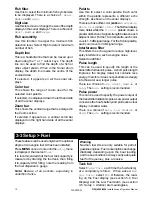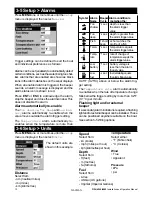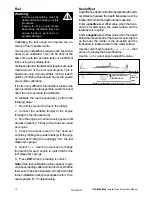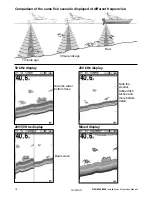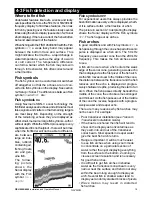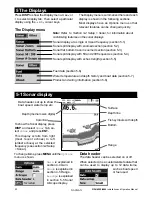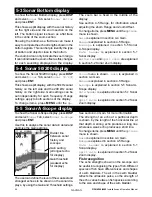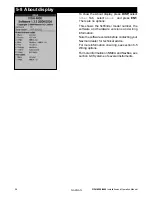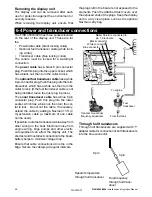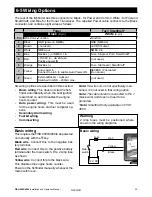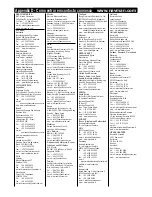
5-4 Sonar 50/200 display
To show the Sonar 50/200 display, press
DISP
and select
Sonar
Tab, select
Sonar 50/200
and press
ENT.
This shows a split display, with the 50 kHz sonar
history on the left side and the 200 kHz sonar
history on the right side. Gain settings can be
set independently for each frequency. Range
settings apply to both sections of the display.
To change items, press
MENU
until the
Op-
tions
menu is shown.
Gain
is explained in
section 4-4 Gain.
Range
is explained in section 4-5 Range.
A-scope
is explained in section 5-5 Sonar A-
Scope display.
Data header
is explained in section 5-1 Sonar
display.
Split ratio
is explained in section 5-2 Sonar
Zoom display.
5-3 Sonar Bottom display
To show the Sonar Bottom display, press
DISP
and select
Sonar
Tab, select
Sonar Bottom
and press
ENT.
This shows a split display, with the sonar history
on the right side and the zoom section on the
left. The bottom signal is shown as a flat trace
in the centre of the zoom section.
Showing the bottom as a flat trace can make it
easy to compare the echo strengths shown in the
bottom signals. This can help to identify the type
of bottom and objects close to the bottom.
The zoom bar can only indicate the zoom range.
It cannot indicate the zoom offset as this changes
for each sounding displayed on the display.
The zoom bar is fixed in the middle of the
display.
See section 4-5 Range, for information about
adjusting the Zoom Range and Zoom Offset.
To change items, press
MENU
until the
Options
menu is shown.
Gain
is explained in section 4-4 Gain.
Range
is explained in section 4-5 Range.
A-scope
is explained in section 5-5 Sonar
A-Scope display.
Data header
is explained in section 5-1
Sonar display.
Bottom lock
and
Split ratio
are explained
in section 5-2 Sonar Zoom display.
5-5 Sonar A-Scope display
See section 4-4 Gain, for more information.
The strength of an echo at a particular depth
is shown by the length of the horizontal line at
that depth. A strong echo produces a long line
whereas a weak echo produces a short line.
To change items, press
MENU
until the
Options
menu is shown.
Gain
is explained in section 4-4 Gain.
Range
is explained in section 4-5 Range.
Data header
is explained in section 5-1
Sonar display.
Split ratio
is explained in section 5-2 Sonar
Zoom display.
Fish recognition
The echo strengths shown on the A-scope can
be useful in recognising the type of fish. Different
species of fish have different sizes and shapes
of swim bladders. The air in the swim bladder
reflects the ultrasonic pulse, so the strength of
the echo varies between fish species according
to the size and shape of the swim bladder.
The user can define the level of the weakest and
strongest echoes to be shown on the sonar dis-
plays, by using the Gain and Threshold settings.
Divider line
between sonar
history and
A-scope
Gain setting
(strongest echo
for display)
Gain threshold
(weakest echo
for display)
To show the Sonar A-Scope display, press
DISP
and select
Sonar
Tab, select
Sonar A-Scope
and press
ENT.
Use this to analyse the sonar data in detail and
optimize the Gain settings.
FISH 4500/4600
Installation and Operation Manual
24
NAVMAN
Summary of Contents for FISH 4500
Page 33: ......

